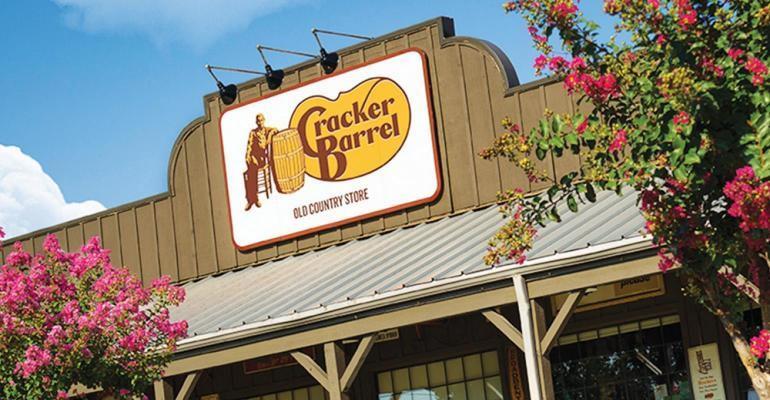Cracker Barrel Old Country Store Inc. is continuing to struggle under new leadership, as new CEO Julie Felss Masino talked about a long road ahead to recovery and long-term profitability for the Lebanon, Tenn.-based casual-dining brand. Cracker Barrel reported a 4% decline in traffic and modest same-store restaurant sales growth of 1.2% with a more than 5% decline for retail sales for the second quarter ended Jan. 26, 2024. The second quarter is generally one of the strongest for Cracker Barrel, as it includes the Thanksgiving and holiday seasons.
“We’re encouraged by our progress but we have so much work to do,” Masino said her first solo earnings call on Tuesday as CEO. “We firmly believe focusing on three initiatives moving forward — driving brand relevance, food and experience, and growing profitability. — will build on momentum and deliver long-term value, but it will not be quick or easy.”
These three imperatives are part of the Cracker Barrel brand repositioning initiative for 2024, which includes modernizing brand messaging and positioning, and refreshing stores and menus. The food innovation initiative includes a new menu test of 20 different items, plus some item modifications and deletions as the company struggles to improve its traffic and continue to stay relevant in the eyes of the consumer. The first of these new menu items are the Golden Carolina BBQ Chicken Tenders announced in January, and the new French Berry French Toast Bake.
“We have begun testing changes to decor -- we can update and brighten interiors to entice people new to the brand,” Masino said. “We are committed to being disciplined and thoughtful with respect to food and guest experience — we must provide delicious craveable food, unique retail products, and an experience that makes people come back.”
Part of that strategy for keeping customers coming back is the attention paid to the new loyalty program, which was just announced in September. Masino said that it’s a unique offering for the restaurant industry because customers can earn points and rewards on both the restaurant and retail end of the Cracker Barrel business simultaneously. She added that loyalty members are steadily growing and accounted for half of the Thanksgiving heat and serve sales.
Besides this new brand repositioning strategy, Cracker Barrel executives admitted that the company needs to continue to recover in the face of historically high inflation. The company is going to be changing its labor model to reduce the amount of fixed labor needed for store locations, and therefore reduce the amount of labor expenditures. Cracker Barrel is also testing out new strategic pricing capabilities in the coming weeks:
“Cracker Barrel has historically taken pricing in thoughtful and careful manner,” CFO Craig Pommells said Tuesday. “We need to improve pricing sophistication and our capability to understand price elasticity to move to a more barbell pricing structure… this does not simply mean taking more pricing, just being even more surgical and thoughtful about it.”
For the second quarter ended Jan. 26, Cracker Barrel’s net income was $26.5 million or $1.19 per share, down 13% from $30.5 million or $1.37 per share the same quarter the year prior. The company opened one new Cracker Barrel unit and three new Maple Steet Biscuit Company units in the first quarter for a total of 725 restaurants portfolio-wide.
Contact Joanna Fantozzi at [email protected]





